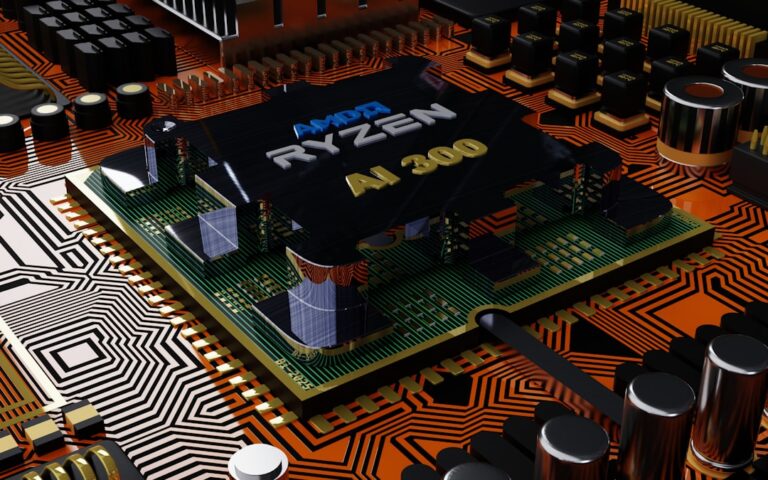Airgap technology is a security measure that involves isolating a computer or network from unsecured networks, particularly the internet. This method creates a physical or logical separation that prevents unauthorized access and data breaches. The concept of an airgap is rooted in the idea that by creating a barrier, sensitive information can be safeguarded from external threats.
In practice, this means that systems containing critical data are not connected to any network that could potentially expose them to cyberattacks. For instance, many government agencies and financial institutions utilize airgap technology to protect their most sensitive data, ensuring that even if external networks are compromised, their internal systems remain secure. The implementation of airgap technology can take various forms, from completely disconnected systems to those that only allow controlled data transfers through secure means.
For example, a military organization might use airgapped systems to manage classified information, ensuring that no data can be exfiltrated or tampered with from outside sources. This approach is particularly effective in environments where the stakes are high, and the cost of a data breach could be catastrophic. However, while airgap technology provides a robust layer of security, it is essential to understand its operational implications and the need for careful management of data transfer processes.
Key Takeaways
- Airgap technology physically isolates sensitive data from the internet and other networks, providing an extra layer of security.
- Implementing airgap technology in your organization requires careful planning and consideration of the specific data and systems that need to be protected.
- Airgap technology can significantly reduce the risk of data breaches and unauthorized access, providing peace of mind for organizations handling sensitive information.
- However, airgap technology is not without its limitations, including the potential for human error and the need for regular maintenance and updates.
- Best practices for maintaining airgap security include regular testing, monitoring, and updating of the airgapped systems to ensure continued protection.
Implementing Airgap Technology in Your Organization
Implementing airgap technology within an organization requires a strategic approach that considers both the technical and operational aspects of the systems involved. The first step is to identify which systems and data require protection. This often involves conducting a thorough risk assessment to determine the sensitivity of the information and the potential impact of a breach.
Once critical assets are identified, organizations can design an architecture that physically separates these systems from unsecured networks. This may involve setting up dedicated hardware that is not connected to the internet or any other external networks. In addition to physical separation, organizations must also establish protocols for data transfer between airgapped systems and external networks.
This can include using secure USB drives or other removable media that are scanned for malware before being connected to the airgapped system. It is crucial to implement strict access controls and monitoring to ensure that only authorized personnel can interact with these systems. Training employees on the importance of airgap security and the procedures for handling sensitive data is also vital to prevent accidental breaches.
By fostering a culture of security awareness, organizations can enhance their overall defense against potential threats.
Benefits of Airgap Technology for Data Security

The primary benefit of airgap technology is its ability to provide a high level of security for sensitive data. By isolating critical systems from external networks, organizations significantly reduce the risk of cyberattacks, including malware infections, ransomware attacks, and unauthorized access attempts. This isolation acts as a formidable barrier against many common attack vectors, making it exceedingly difficult for cybercriminals to infiltrate airgapped systems.
For instance, in industries such as healthcare and finance, where data breaches can lead to severe legal and financial repercussions, airgap technology serves as a crucial safeguard. Moreover, airgap technology can enhance compliance with various regulatory frameworks that mandate stringent data protection measures. Organizations operating in sectors like finance, healthcare, and government often face strict regulations regarding data privacy and security.
By implementing airgap solutions, these organizations can demonstrate their commitment to safeguarding sensitive information and adhering to compliance requirements. Additionally, the use of airgapped systems can simplify audits and assessments by providing clear evidence of data protection measures in place.
Potential Risks and Limitations of Airgap Technology
| Category | Potential Risks and Limitations |
|---|---|
| Security | While airgap technology can provide strong security, it is not immune to all threats. For example, if a malicious actor gains physical access to a device, they may be able to compromise the airgap. |
| Complexity | Implementing and maintaining airgap technology can be complex and require specialized knowledge. This can lead to potential errors or misconfigurations that could compromise the effectiveness of the airgap. |
| Cost | Setting up and maintaining airgap technology can be costly, especially for large-scale deployments. This can be a limitation for organizations with budget constraints. |
| Usability | Airgap technology can introduce usability challenges, such as the need to manually transfer data between airgapped and connected systems. This can impact productivity and user experience. |
Despite its advantages, airgap technology is not without its risks and limitations. One significant challenge is the potential for human error during data transfer processes. Employees may inadvertently introduce malware or other vulnerabilities when moving data between airgapped systems and external networks.
For example, if an employee connects an infected USB drive to an airgapped system, it could compromise the integrity of the entire network. Therefore, organizations must implement rigorous protocols for scanning and validating any removable media before it interacts with sensitive systems. Another limitation of airgap technology is its impact on operational efficiency.
The isolation of systems can hinder collaboration and slow down workflows, particularly in environments where timely access to information is critical. For instance, research and development teams may find it challenging to share data quickly if they must adhere to strict protocols for transferring information between airgapped systems and connected networks. This trade-off between security and efficiency must be carefully managed to ensure that organizations can maintain productivity while protecting sensitive data.
Best Practices for Maintaining Airgap Security
To maximize the effectiveness of airgap technology, organizations should adopt best practices that reinforce their security posture. One essential practice is regular audits of airgapped systems to ensure compliance with established security protocols. These audits should include assessments of physical security measures, access controls, and data transfer processes.
By conducting routine checks, organizations can identify potential vulnerabilities and address them proactively before they lead to security incidents. Another best practice involves implementing robust monitoring solutions that track access to airgapped systems. This includes logging all interactions with these systems and analyzing access patterns for any anomalies that may indicate unauthorized attempts to breach security.
Additionally, organizations should establish clear incident response plans specifically tailored for airgapped environments. These plans should outline procedures for addressing potential breaches or security incidents while minimizing disruption to operations.
Integrating Airgap Technology with Other Security Measures

While airgap technology provides a strong foundation for data security, it is most effective when integrated with other security measures as part of a comprehensive defense strategy. For instance, organizations can enhance their security posture by combining airgap solutions with advanced threat detection systems that monitor network traffic for suspicious activity. This layered approach allows organizations to detect potential threats before they reach critical systems.
Furthermore, employing encryption techniques for data at rest and in transit can bolster the security of airgapped systems. Even if an attacker were somehow able to gain access to an airgapped system, encrypted data would remain protected from unauthorized access. Additionally, organizations should consider implementing multi-factor authentication (MFA) for accessing sensitive systems, further reducing the risk of unauthorized entry.
By integrating these measures with airgap technology, organizations can create a more resilient security framework capable of defending against evolving threats.
Regulatory Compliance and Airgap Technology
Regulatory compliance is a significant consideration for organizations implementing airgap technology. Many industries are subject to strict regulations regarding data protection and privacy, such as the General Data Protection Regulation (GDPR) in Europe or the Health Insurance Portability and Accountability Act (HIPAA) in the United States. Airgap technology can play a crucial role in helping organizations meet these compliance requirements by providing a secure environment for storing and processing sensitive information.
For example, financial institutions often face stringent regulations regarding customer data protection. By utilizing airgapped systems for storing sensitive financial records, these institutions can demonstrate their commitment to safeguarding customer information while minimizing the risk of breaches that could lead to regulatory penalties. Additionally, organizations should stay informed about evolving regulatory landscapes and ensure that their airgap implementations align with current compliance standards.
Future Developments in Airgap Technology for Data Security
As cyber threats continue to evolve, so too will the technologies designed to combat them. The future of airgap technology is likely to see advancements that enhance its effectiveness while addressing some of its limitations. One potential development is the integration of artificial intelligence (AI) and machine learning (ML) into airgapped environments.
These technologies could enable more sophisticated monitoring and threat detection capabilities, allowing organizations to identify potential vulnerabilities in real-time. Moreover, as remote work becomes increasingly prevalent, there may be innovations in how airgap technology is applied in hybrid work environments. Organizations may explore new methods for securely connecting remote employees to airgapped systems without compromising security protocols.
By understanding its principles, implementing best practices, and integrating it with other security measures, organizations can effectively protect their most sensitive information against evolving threats while ensuring compliance with regulatory requirements.
If you are interested in exploring the concept of potentiality and actuality in philosophy, you may enjoy reading an article on Aristotle’s philosophy at this link. This article delves into the ideas of form, matter, causation, and more as discussed by the ancient Greek philosopher. It’s a fascinating read for those looking to deepen their understanding of philosophical concepts.





















+ There are no comments
Add yours